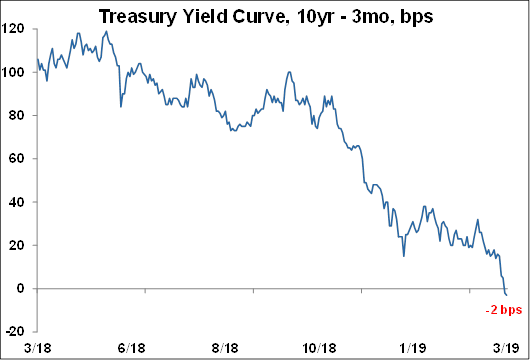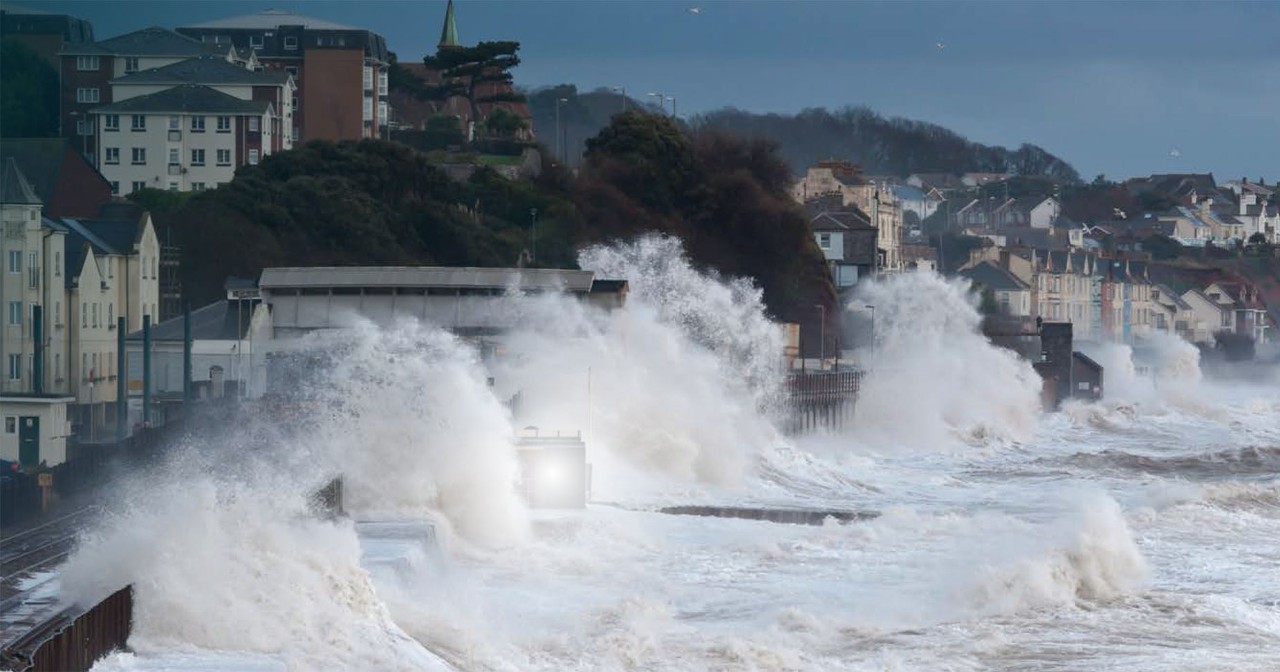The US Treasury yield curve inverted on Friday, meaning that short term interest rates became higher than long-term rates, the opposite of their normal relationship. Specifically, the Treasury bill maturing in 3 months yielded an interest rate of 2.46%, while the 10 year note yielded 2.44%, and those values are still in place as of Monday morning. The difference of 0.02%, or 2 basis points as represented by the blue line in the chart, may not seem like much, but as shown on the second chart, out of the last seven times the curve has inverted, a recession has followed. On average the lag between the curve inverting and a recession starting has been about a year, although it has been as long as six quarters and as short as two quarters. An inversion is a sign that the Federal Reserve has already raised interest rates too far. And since Fed interest rate hikes (or cuts) can take a full year to work through the economy, the most recent hike in December has yet to flow all the way through the economy with its accompanying slowing effect. It’s important to note that a yield curve inversion rarely happens in isolation. There is normally a more encompassing story surrounding the situation, and at the present time that story includes tepid consumption, a faltering housing market, worries over Brexit, a global slowdown (Italy, Argentina, and Turkey in recessions), consumer surveys indicating fear over the future, divided government, diminishing fiscal stimulus, and concerns over the trade dispute with China. Nothing is set in stone, but this is certainly a most unwelcome development.
- Euler Hermes in USA
- Insights
- US: The Yield Curve has Inverted

US: The yield curve has inverted and is indicating a recession in the future.


Get economic & trade content in your inbox
We're always producing new content to help businesses understand economic trends and navigate trade uncertainty.
Sign up for our newsletters to make sure you don't miss anything.
Sign up for our newsletters to make sure you don't miss anything.
















